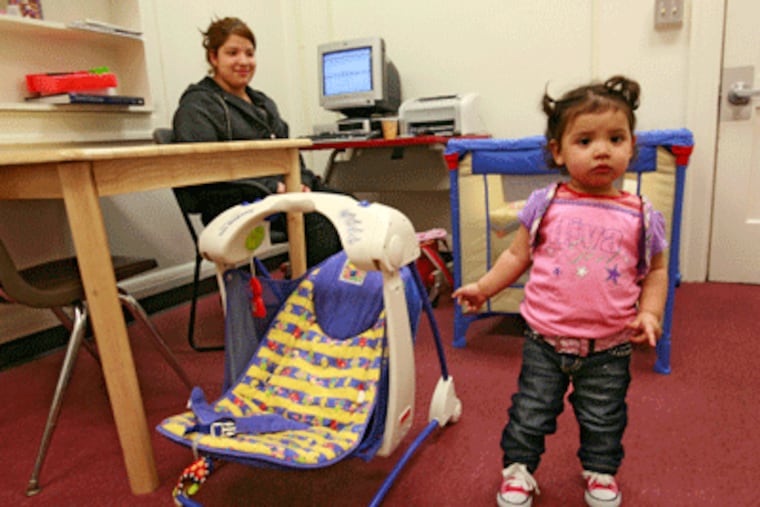Teen pregnancy's high cost
U.S. rate is down but still far higher than in most developed nations.

Last week a new mother brought her 5-day-old daughter in for a routine health-care visit. "How old are you?" I asked.
"Sixteen," she answered, embarrassed. This case was anything but routine.
Some good news. The teen pregnancy rate in the United States has dipped to its lowest recorded level since 1976, according to a new report from the Centers for Disease Control and Prevention - a 40 percent decline from 1990 to 2008. Break open the champagne.
But don't raise our almost $10 billion glass of bubbly yet (the estimated cost to the nation of teen childbearing). The grapes are sour.
The U.S. teen birthrate of 40 live births per 1,000 teenage girls is the second-highest of developed nations, just behind the 42 of Bulgaria, where marriage in the teenage years is very common, and far behind Canada at 12. That's 367,752 such babies a year in the United States and 3,500 yearly in Philadelphia. A disproportionate number of teen births occur in areas of concentrated poverty. This trend contributes to the second-highest rate - 67 percent - of single-parent households in the nation.
More bad news. The disparities in teen-pregnancy rates among white teens, black teens, and Latinos are massive, with pregnancy rates of 26, 59, and 70 per 1,000 births, respectively: more than double the rates for black teens compared to white teens, and almost triple the rate for teenage Latinas.
Sixty-seven percent of teen births are to 18- and 19-year-olds, which leaves one-third of babies born in the United States to mothers younger than 17. These young women must focus on calming down a crying baby rather than studying for midterms.
An additional 7,000 U.S. teen mothers are under 15, balancing high school choices with searching for the least expensive diapers; too young for a learner's permit, yet needing to keep their baby safe in a car seat.
Only 18 percent of births to teen mothers are intended. That leaves 82 percent of babies unintended, born to mothers whose developing brain is still functioning in the midbrain, where emotions and instant gratification dominate logic and self-control. That's not the best recipe for conscientious parenting.
The younger the mother, the lower the birth weight of her newborn: 14.5 percent of babies born to teen mothers are premature and have a lower birth weight.
Even more ominous is the infant mortality rate. Of 1,000 live births, 10.28 babies do not make it to their first birthday, compared with the national average of 6.86, which ranks the United States at 34th of all industrialized nations. Even grimmer, babies born to mothers under 15 have a mortality rate of 16.4.
Children born to teen mothers are also more likely to be physically abused and neglected, and those born to the youngest mothers are twice as likely to be abused.
Later on, academic issues become a major factor. In Philadelphia, a devastating 70 percent of teen mothers drop out of high school. The cycle continues with their children. Students born to teen mothers are more likely to be held back a grade, less likely to get a high school diploma, and prone to academic and behavior problems.
A child born to a teenage, unwed, high school dropout is nine times more likely to be poor and on welfare.
The prematurity, the stress, the academic and behavioral issues, the lower self-esteem all contribute to earlier sexual activity and pregnancy. In fact, an infant girl born to a mother younger than 20 years old is three times more likely to give birth before the age of 20. The cycle keeps spinning.
Let's not forget the boys. Of boys born to teen mothers, 10.3 percent become incarcerated and are then scarred with a criminal record.
What to do?
We know that higher maternal education attainment in teen parents leads to improved cognitive and behavioral outcomes among their children.
Successful teen parenting programs all have three key components: keeping teen parents in school, getting children into high-quality early-child care, and ensuring participation in parenting classes as early as possible.
Programs in Philadelphia include the ELECT Program through the school district, the MOM home visiting program through the city, and the MomMobile through the Maternity Care Coalition.
Programs such as Girls Inc. (215-735-7775) and Y-HEP (215-564-6388) work with high-risk teens to prevent pregnancy. Improved access to contraception with programs such Take Control Philly (http://takecontrolphilly.org) and the Family Planning Council also target teen pregnancy reduction.
We need to take responsibility to improve hope in children's lives, to support them in their early years, school years and beyond. We need to help prevent teen pregnancy. The cost is too great, the grapes too sour.